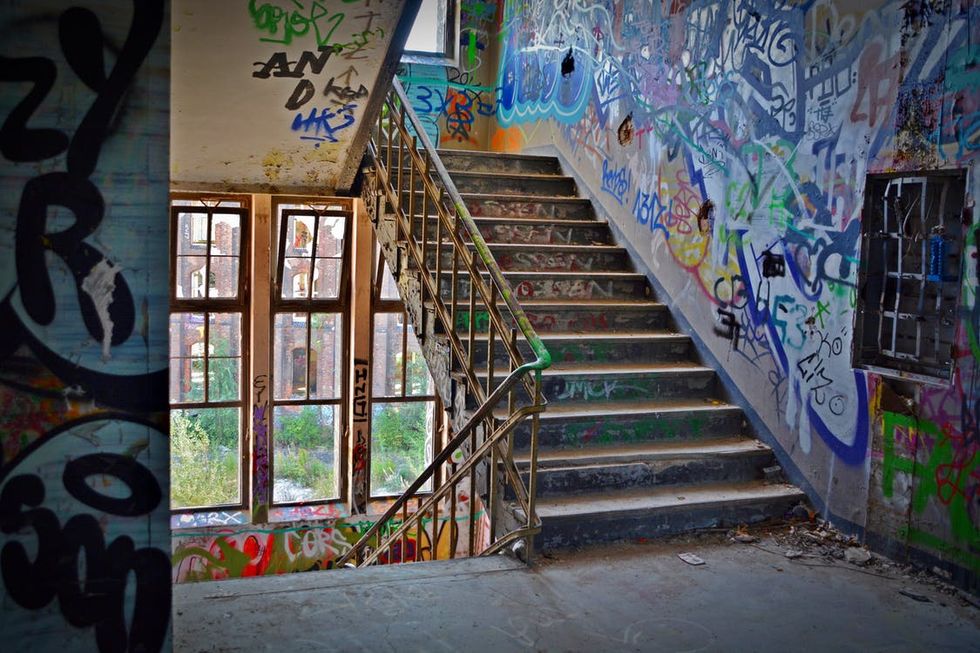Urban Exploring is a term that, in recent years, has been immersed in rumors, myths, and legends often with both negative and consequential connotations. With the rise in popularity of online threads and forums surrounding such activities, it is no wonder that the notoriety and familiarity of urban exploring has become common place. However, many may still not fully understand what urban exploring entails.
At its roots, urban exploration, which is also referred to as "urbexing," is simply the exploration of urban landscapes that are more often than not abandoned. Urban exploration has always been a part of international societies for as long as urban landscapes have existed. However, in more recent years urbexing has come to unite many adventurers and explorers under a common hobby.
Perhaps almost as mysterious as the activity itself, modern urbexing found its origins and first glimpses at international exposure in the post-Cold War climate of Russia and other Slavic European nations. As a decades long arms race came to a close, many factories, government offices, and in some cases, entire towns were shut down and abandoned leaving only empty shells of society in their wake.
During the late 80s and early 90s adventuring teens and wanderlust-filled adults began to explore these bunkers, homes, and hulls of the former Soviet Union as well as thousands of other structures across Europe.
As the age of the internet dawned upon this youthful generation they found an outlet in which to display their findings and tell their own tales of exploration. As more and more began to catch on to these trends, communities were created for the sole purpose of harboring and curating the artifacts of exploration.
Today, urbexing has been further exposed to an even larger, open-minded, and well-informed populous. Although European societies had a much larger urbexing boom in the 90s and early 2000s, the United States is just now truly experiencing its urbexing renaissance. The number of people professionally partaking in urban exploration is at an all time high and will most likely continue to rise. Whereas in Europe the main focus of urban exploration centered around large abandoned factories and the like, in the US standing abandoned structures such as these are few and far between due to the rapid growth of urbanism. Instead, urbexing in the US tends to take a route more focused on abandoned private residences, churches, and occasionally smaller scale industrial buildings of days long gone.
For many, urban exploring is, ironically, the last great form of exploration. As a global society there are few lands we have not conquered, seen, or civilized and thus it has become increasingly difficult to truly "discover" something new. Instead, as towns are forgotten and buildings abandoned, urbexers aim to rediscover the beauty in the structures left by the societies that created them. Oftentimes these structures might not have had a person in them for 50 years or 5 but knowing that you might just be the first person to step inside a once inhabited shelter since that period of time can be liberating and empowering.
For all its positives urbexing does have negatives which, unfortunately, modern societies tend to accentuate and standardize when it comes to the topic. Urbexing is dangerous and is not a hobby to be taken up by the impaired or disabled. In fact, some people become involved in urbexing for the rush of adrenaline it can bring. There are thousands of horror stories when it comes to urbexing whether it be injury, arrest, or merely displeasing sights and events, but for all the scary stories there are just as many good ones.
The leading opposition to urbexing is that much of the areas that urbexers find appealing lie on private property or are barred from public entry. Although more lax in some areas, trespassing laws in the US are relatively harsh. This of course limits the options which many urban explorers in the US might have. However, there are thousands of abandoned structures across the US and beyond that lie on public property, are free to enter, or even are managed by an organization or group which might even allow guided tours.
If you are interested in urban exploring I highly implore you to look into the activity and discover what lies within your own comfort zone. There are many ways to partake in urban exploration and every person is entitled to their own personal avenue. Before you go on your own expedition make sure you know what you're getting into, you have the right gear, and know what to do in the case of an emergency. Make sure to bring a friend as it is never a good idea to explore alone. Take pictures, draw structures, record a video, or write about what you see, the choice is completely yours. However, and most importantly, be sure to have fun while you explore!





 mr and mrs potato head
StableDiffusion
mr and mrs potato head
StableDiffusion










